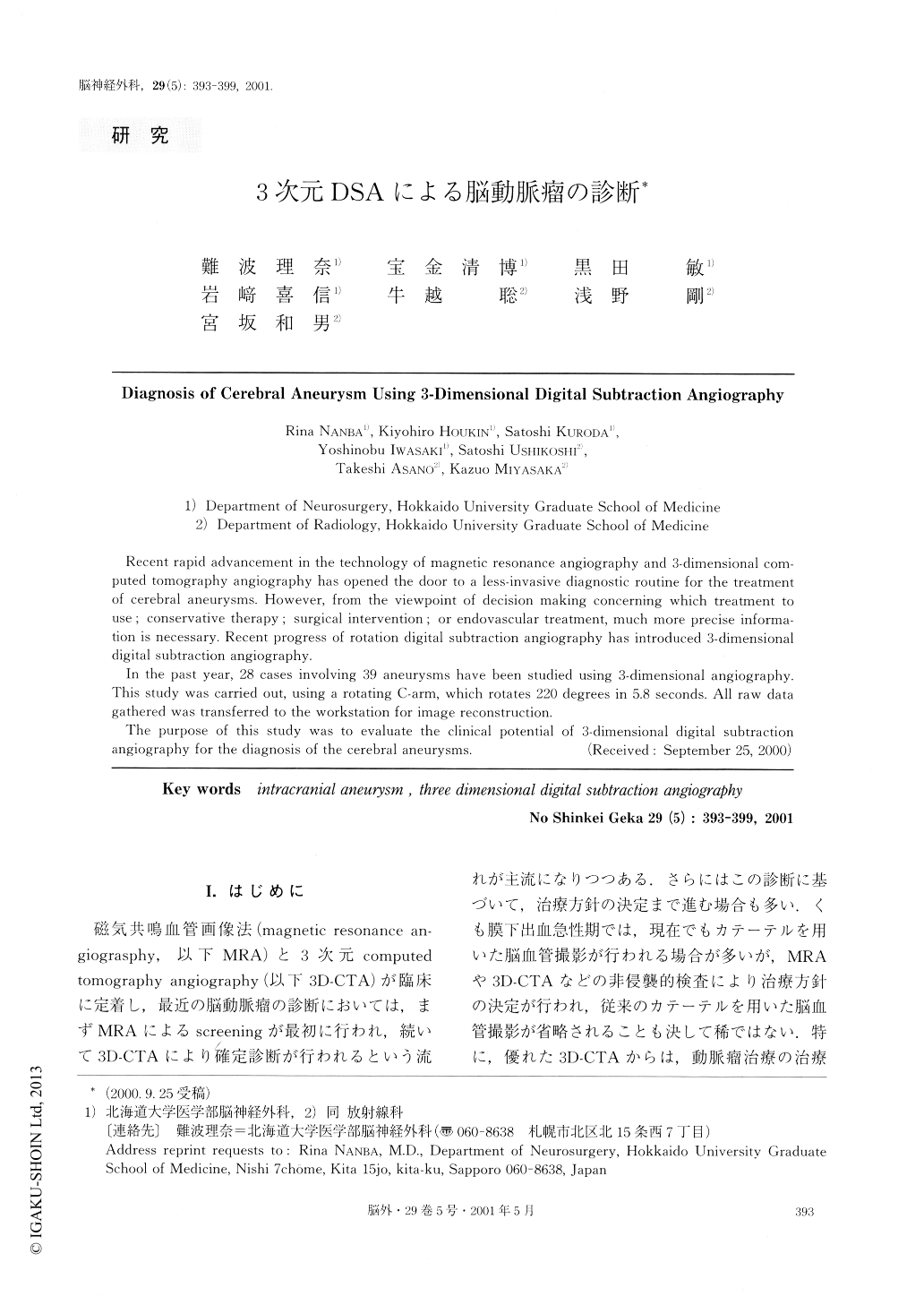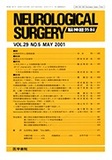Japanese
English
- 有料閲覧
- Abstract 文献概要
- 1ページ目 Look Inside
I.はじめに
磁気共鳴血管画像法(magnetic resonance an-giograsphy,以下MRA)と3次元computedtomography angiography(以下3D-CTA)が臨床に定着し,最近の脳動脈瘤の診断においては,まずMRAによるscreeningが最初に行われ,続いて3D-CTAにより確定診断が行われるという流れが主流になりつつある.さらにはこの診断に基づいて,治療方針の決定まで進む場合も多い.くも膜下出血急性期では,現在でもカテーテルを用いた脳血管撮影が行われる場合が多いが,MRAや3D-CTAなどの非侵襲的検査により治療方針の決定が行われ,従来のカテーテルを用いた脳血管撮影が省略されることも決して稀ではない.特に,優れた3D-CTAからは,動脈瘤治療の治療方針決定に重要な要素である,動脈瘤頸部の形態についてほぼ満足すべき情報を得ることができる.
これに対して,回転型のdigital subtractionangiography(DSA)が臨床に応用され始め,最近,脳動脈瘤診断への臨床応用が活発に行われ始めた.これは,MRAや3D-CTAという非侵襲的な診断の方向性と逆行する印象を与えるが,一方で,その有用性と意義に関する報告も最近増えてきている.この論文では,脳動脈瘤の診断における3次元DSA(以下3D-DSA)の初期臨床経験を述べ,この新しい診断機器が今後占めるであろう臨床的意義について検討する.
Recent rapid advancement in the technology of magnetic resonance angiography and 3-dimensional com- puted tomography angiography has opened the door to a less-invasive diagnostic routine for the treatment of cerebral aneurysms. However, from the viewpoint of decision making concerning which treatment to use ; conservative therapy; surgical intervention; or endovascular treatment, much more precise informa- tion is necessary. Recent progress of rotation digital subtraction angiography has introduced 3-dimensional digital subtraction angiography.
In the past year, 28 cases involving 39 aneurysmshave been studied using 3-dimensional angiography.This study was carried out, using a rotating C-arm,which rotates 220 degrees in 5.8 seconds. All rawdatagathered was transferred to the workstation forimage reconstruction.
The purpose of this study was to evaluate theclinical potential of 3-dimensional digitalsubtractionangiography for the diagnosis of the cerebralaneurysms.

Copyright © 2001, Igaku-Shoin Ltd. All rights reserved.


